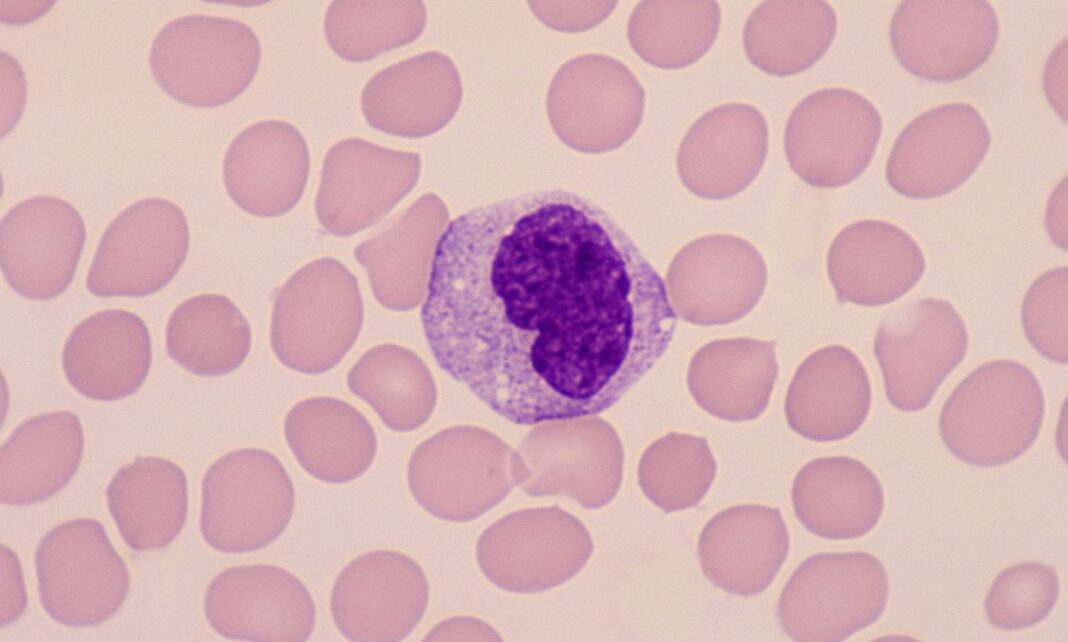Monocytopenia: Definition, Causes, Symptoms, and Diagnostic Tests
What is Monocytopenia?
Monocytopenia is a rare disorder characterized by a low number of monocytes, a type of white blood cell, in the blood. Monocytes are produced in the bone marrow and account for 2% to 6% of white blood cells at any given time.
Causes of Monocytopenia
Monocytopenia can be caused by a variety of factors, including:
- Anaphylaxis (a severe allergic reaction)
- Sepsis (a whole-body reaction to a blood infection)
- Severe trauma
- Human immunodeficiency virus (HIV) infection
- Cancers that invade the bone marrow, such as chronic myelomonocytic leukemia (CMML)
- Diseases that affect bone marrow function
- Common medical treatments, such as hemodialysis, corticosteroid medication, and cancer treatments like chemotherapy and radiation therapy
Symptoms of Monocytopenia
Symptoms of monocytopenia can include:
- Lymphadenopathy (swollen lymph nodes)
- Fever
- Nausea and vomiting
- Swelling, pain, or discomfort
- Frequent infections, including bacterial, fungal, and viral infections
- Mycobacterial infection
GATA2 Deficiency
GATA2 deficiency is a rare genetic disorder that can cause monocytopenia. It is inherited in an autosomal dominant pattern, meaning that anyone who inherits one copy of the mutated gene will develop the condition. Symptoms can begin as early as infancy or as late as adulthood and can include lymphadenopathy, warts, and frequent viral, fungal, and bacterial infections.
Hairy Cell Leukemia
Hairy cell leukemia is a type of blood cancer that can cause monocytopenia. It is characterized by the production of an abnormal type of white blood cell called hairy cells. Symptoms can include an enlarged spleen and a predisposition to infections.
Diagnostic Tests
Diagnosis of monocytopenia typically involves a complete blood count (CBC) to evaluate the number of monocytes in the blood. Other tests may be necessary to identify the underlying cause of the condition, including:
- Blood smear (a blood sample is prepared on a slide, stained, and examined under a microscope)
- Genetic testing (to identify genetic mutations that may be contributing to the condition)
- Blood cultures (to detect bacterial or fungal infections)
Conclusion
Monocytopenia is a rare disorder characterized by a low number of monocytes in the blood. It can be caused by a variety of factors, including infections, cancers, and medical treatments. Early diagnosis and treatment can help manage symptoms and prevent complications.
Frequently Asked Questions
Q: What is the treatment for monocytopenia?
A: Treatment for monocytopenia typically involves managing underlying symptoms and preventing infections. This may include antibiotics, antivirals, and antifungals, as well as treatment of any underlying conditions, such as anemia or neutropenia.
Q: Can monocytopenia be prevented?
A: In some cases, monocytopenia can be prevented by taking precautions to prevent infections, such as getting vaccinated and practicing good hygiene. However, in many cases, monocytopenia is a symptom of an underlying condition and cannot be prevented.
Q: What is the prognosis for people with monocytopenia?
A: The prognosis for people with monocytopenia depends on the underlying cause of the condition and the severity of symptoms. With proper treatment, many people with monocytopenia can lead normal, healthy lives. However, in some cases, monocytopenia can be a sign of a more serious underlying condition, such as cancer, which can have a significant impact on quality of life and life expectancy.




